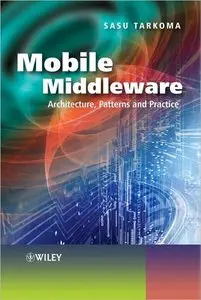Sasu Tarkoma "Mobile Middleware Architecture, Patterns, and Practice"
John Wiley & Sons | 2009-05 | ISBN: 0470740736 | 338 pages | PDF | 3 MB
John Wiley & Sons | 2009-05 | ISBN: 0470740736 | 338 pages | PDF | 3 MB
This book offers a unified treatment of mobile middleware technology. "Mobile Middleware: Architecture, Patterns and Practice" provides a comprehensive overview of mobile middleware technology. The focus is on understanding the key design and architectural patterns, middleware layering, data presentation, specific technological solutions, and standardization. The author addresses current state of the art systems including Symbian, Java 2 Micro Edition, W3C technologies and many others, and features a chapter on widely deployed middleware systems. Additionally, the book includes a summary of relevant mobile middleware technologies, giving the reader an insight into middleware architecture design and well-known, useful design patterns. Several case studies are included in order to demonstrate how the presented patterns, solutions, and architectures are applied in practice. The case studies pertain to mobile service platforms, mobile XML processing, thin clients, rich clients, and mobile servers. Chapters on Architectures and Platforms, Mobile Messaging, Publish/Subscribe, Data Synchronization and Security are also included in this title. It provides a comprehensive overview of mobile middleware technology. It presents unified treatment of three core topical areas: messaging, publish/subscribe, and data synchronization. It discusses the role of middleware in the protocol stack. It focuses on both standards and research systems including current state- of-the-art systems such as Symbian, Java 2 Micro Edition, W3C technologies. It contains concrete examples showing the presented architectures and solutions in practice. It includes an accompanying website with links to open source software, and other resources. This book serves as an invaluable guide to systems architects, researchers, and developers. It will also be of interest to graduate and undergraduate students studying computer science (distributed systems, computer networks).



